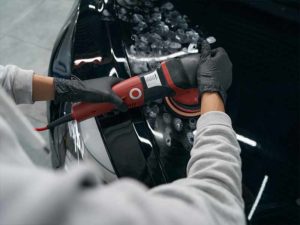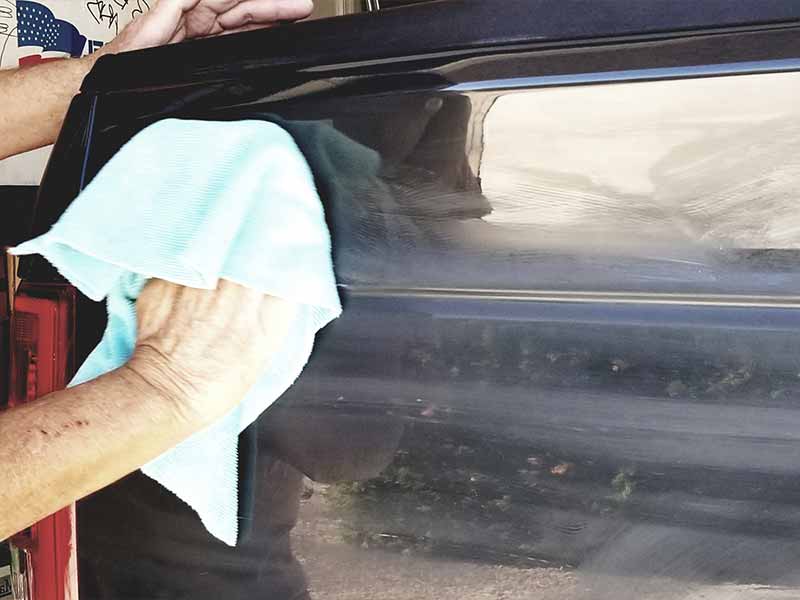Table of Contents
As great as clay bars are, they have plenty of not-so-desirable features. After enough experience, you’ll get used to using clay bars. Still, don’t you wish there was a better way?
Our detailing experts did some research and put together a list of clay bar alternatives. In this piece, we’ll discuss these alternatives and determine if they’re worth it.
Clay Bar Alternatives
Types of clay bar alternative products are:
Clay Towels
Clay Mitts
Synthetic Clay Blocks
Clay Discs
Each of these product types use a similar synthetic clay alternative but applied to a different medium to make using easier and more effective.
Decontamination Is Important
You shouldn’t be afraid of claying your car. The decontamination process is very important.
When products are stuck in your topcoat, they can slowly degrade the surrounding topcoat. If they’re left in the surface long enough, your topcoat will suffer.
The topcoat is there to protect your car from rust. As it gets compromised, the chances of rust get even greater.
By lifting the contaminants and polishing down your topcoat, you’re restoring your car and adding another layer of protection.
Clay Bar Before & After
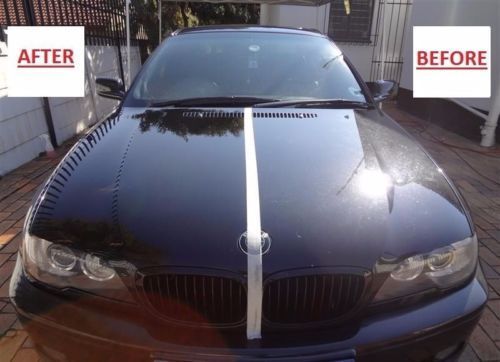
Alternatives to Clay Bars
Let’s talk about some clay bar alternatives. The goal here is to find a product that can fully replace a clay bar while still achieving the same goal: removing contaminants.
It is generally understood that there are four product families that can compete with clay bars, and all of them are very similar.

Clay Towel
The first mechanical alternative worth mentioning is a clay towel. No, this isn’t a piece of clay stretched out to resemble a towel. This is a line of towels that typically have a clay foam side and a microfiber side.
If you didn’t see the packaging, you might just assume this is a sticky kitchen towel. However, it does an incredible job of lifting contaminants from a car’s surface.
You will probably find a towel a lot more convenient than a traditional clay bar. Since they’re larger and easier to handle, you don’t have to worry about carefully kneading and holding a bar of clay.
Also, since they’re larger, they’ll usually get the job done faster. With more surface area, you can wipe down your car quicker.
The big manufacturers claim that each towel can be used up to 30 times.
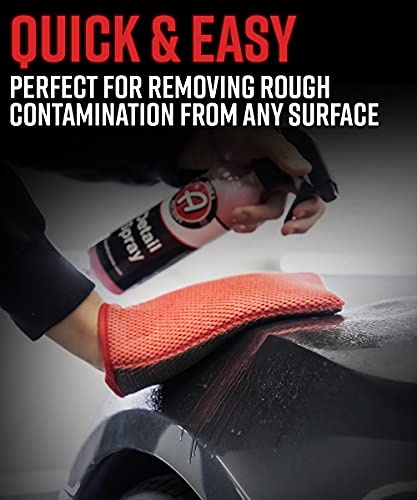
Clay Mitt
If you take a clay towel and make an oven mitt out of it, you have a clay mitt. As you probably guessed, this is a wearable option with the clay on one side and a microfiber towel on the other.
Functionally, it’s the exact same as a clay towel. The only difference is how you hold it. Users might have an easier time handling the mitt since it goes right over your hand.

Synthetic Clay Block
Called “synthetic clay”, this option typically comes in a pad or block. Imagine a stamper with a clay-like surface on the bottom, and you have a pretty good mental image of this option.
Synthetic clays are typically less expensive than some of the other mechanical alternatives, and they work just as well as a mitt or towel.
They largely use foam with a layer of synthetic clay at the base.

Clay Discs
A clay disc works just like the other alternatives listed, but it comes in a low-profile disc. High-quality options can be used on a dual-action polisher, speeding things up. Even used as a handheld option, a clay disc is more comfortable than a traditional bar.
Differences Between a Polishing Pad and a Finishing Pad
To better describe how these two pads differ, we’ll talk about some of the main categories that they differ. This section is all about the differences between a polishing pad and a finishing pad.
The Level of Cut
A polishing pad needs to cut deeper than a finishing pad. Detailers will use a polishing pad to get rid of some minor surface damages like swirls, scratches, and marks.
With finishing pads, the purpose is just to give a very shiny layer with the help of some polishing agents. For that, you won’t need to cut into the topcoat.
For reference, “cutting” refers to how much of the topcoat gets removed during the buffing process. The topcoat of your car is a clear layer of protective material. Over time, the topcoat will wear out and develop some surface-level defects.
When this happens, your car will look dull. Once you polish your car, the topcoat gets restored by removing the defects on the surface. Instead, you’ll be left with a uniform layer of topcoat which will create a shinier look.
To simplify the explanation, polishing pads will cut your topcoat for a shiny look while a finishing pad will not.
Pad Density
If you have a polishing and a finishing pad on a table, you probably won’t notice a difference. They might be a different color, but they’ll otherwise be identical.
So, how can these pads be so different? It’s all about the density and stiffness of the material used. Yes, both pads use a foam material, but polishing pads will be more dense and stiffer.
If you were to touch both pads, the finishing pad will be noticeably softer and squishier.
Their Intended Use
The biggest difference is that these pads are intended for different uses altogether. A finishing pad should only be used to give your car an extra level of shininess. The pad acts as an applicator with very little cutting power. Instead of altering the topcoat, the pad should be used to put on a high-quality finishing product.
After finishing your car, you’ll have a showroom-ready vehicle. Typically, the everyday detailer doesn’t use finishing pads very often.
Instead, they’ll usually use polishing pads. You can think of a polishing pad as a not-so-shiny version of a finishing pad. It will still give your car a good level of shine, but it can’t deliver the same results that a finishing pad can.
As we mentioned, a polishing pad will cut a thin layer of your topcoat. Doing this will give you a more uniform layer of your clear coat which ultimately makes your car look shinier. It also removes surface-level defects, essentially erasing light scratches on your car.
When you hear someone say, “that will buff right out”, they’re referring to using a polishing pad or compounding pad to remove the layer of topcoat in which the scratch is residing.
Color Used
Generally, both pads will be a different color. This is one way for a detailer to tell the two apart without picking them up and handling them.
The idea is that you should be able to immediately tell which pad is which as they’re sitting alongside one another on a shelf.
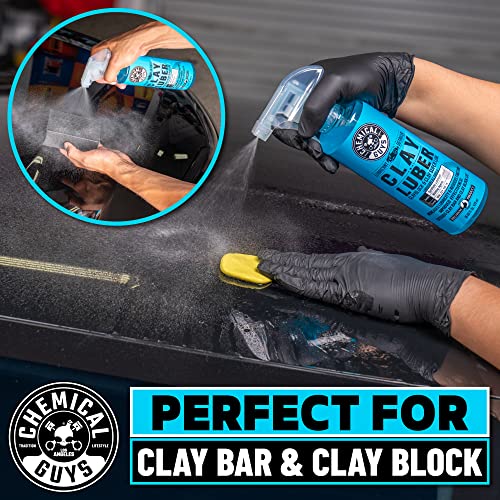
Similarities Between a Polishing Pad and Finishing Pad
While these pads are very different, they have a few major similarities. In this section, we’ll highlight some of the bigger similarities.
Material Composition
First off, both pads are made out of foam in this case. We mentioned earlier that the stiffness is why they can offer different levels of cutting, but the material is unchanged between the two.
They both use a form of foam, but the manufacturing and pre-processing steps are very different.
When They’re Used
Even though both pads are used for different purposes, they’re both used at the same time. After washing your car, you can either polish or finish it.
You shouldn’t use either pad after waxing. Why? The polishing or finishing pad will simply remove the wax that you just applied.
Both pads will be used after washing your car. If you want to polish and finish your car, you would polish first and finish after.
It’s also worth mentioning that neither pad should be used on a dirty car. The dirt and debris on your vehicle can do some real damage to your topcoat as the polisher spins around.
Used on the Same Tool
Both of these pads can be used on an orbital or dual-action polisher. You will just need to ensure the mounting style is the same between the pad and your tool.
If you are looking to polish and finish your car, it helps to have both pads use the same mounting style. For example, if both have Velcro on the back, you can quickly swap out your pads and complete the project.
Otherwise, you would need a second polisher which would be a waste of money.
Which Pad Should You Use?
Finally, let’s discuss which pad is right for you. By this point, you should have a good idea of how each of these pads works and some of the major differences.
If you’re a typical car owner, you probably don’t have a use for a finishing pad. The truth is that the added level of shininess you achieve by finishing your car will quickly fade as you commute and drive around.
Instead, we’d suggest just polishing or waxing your car. Remember, finishing is performed after polishing, so you’d have to polish your car either way. It’s tough to justify the extra step just to get that added level of sheen.
For professional detailers, collectors, car salesmen, and enthusiasts, both pads are necessary. The polishing pad will create a good base, and the finishing pad will give you the best possible shine after. They should both be used to make the car look as presentable as possible.
Since there’s no functional overlap, you can’t get away with just owning one pad or the other if you want a professionally shiny car.

Helpful Links
Conclusion
Now you know all about polishing and finishing pads. You probably noticed that these pads are very different, despite having so much in common. Knowing the purpose of each pad will ensure you have the best products in your garage, and you always get the best detailing results.
If you want to learn more about DIY detailing, check out the rest of our site. We have plenty of helpful posts to get you started and fine-tune your craft.


